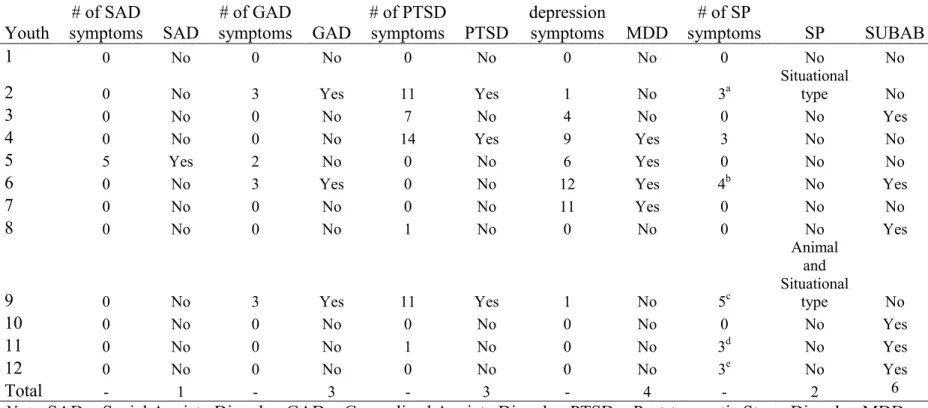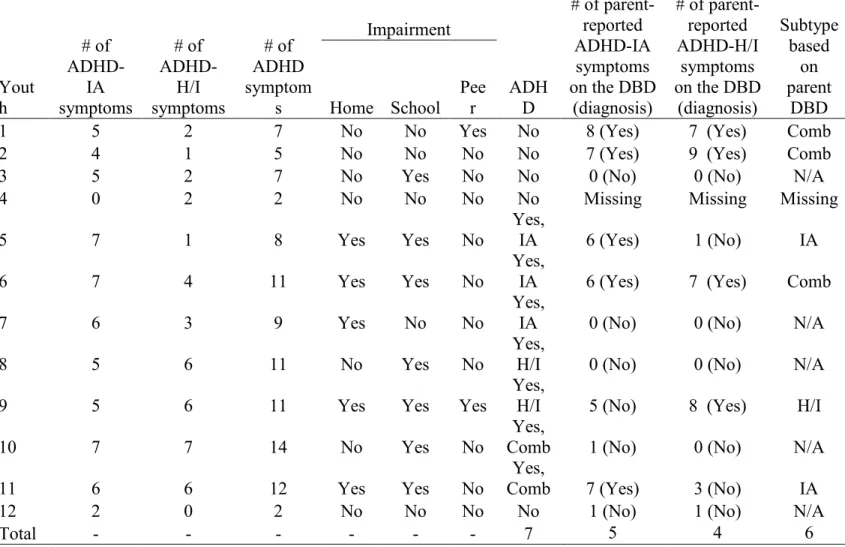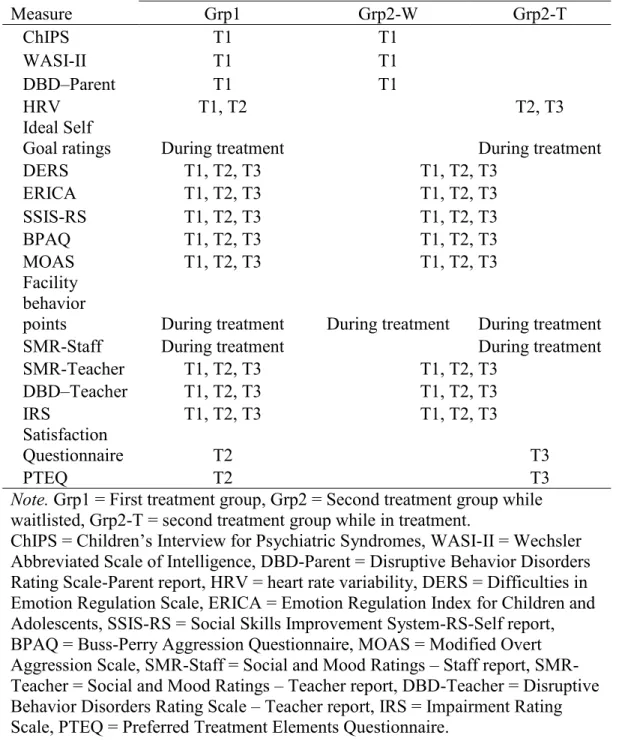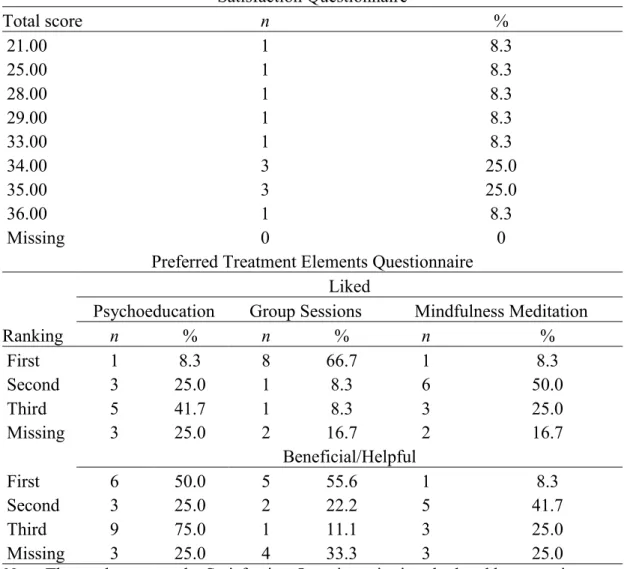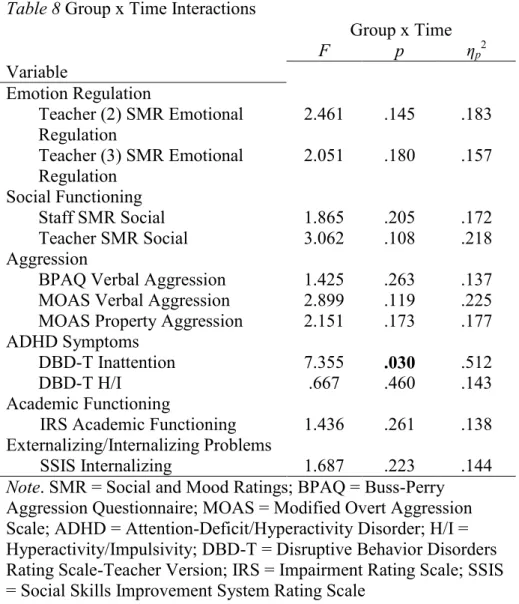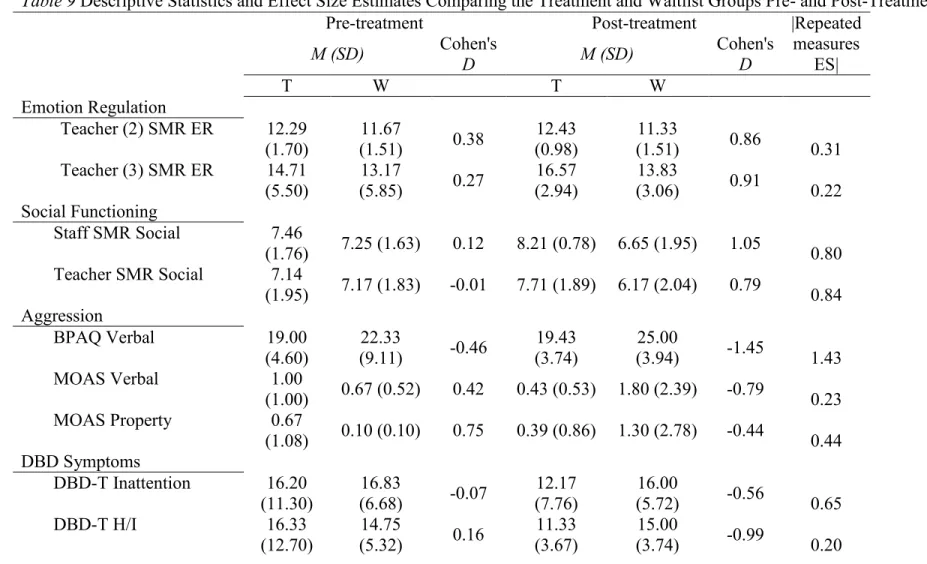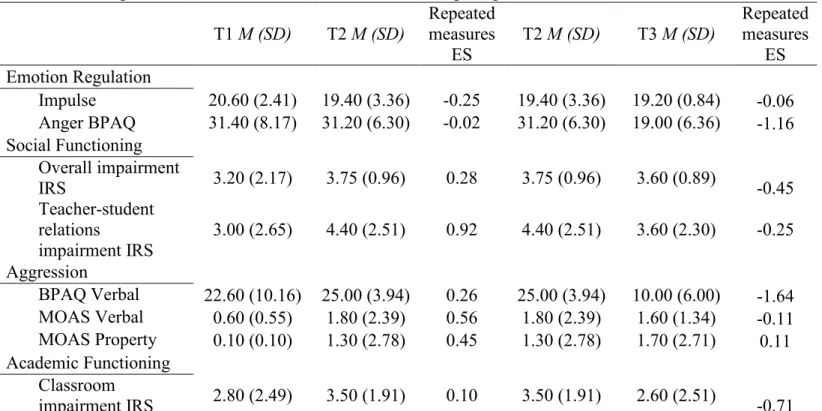Interpersonal Skills Group - Corrections Modified for Incarcerated Juvenile Offenders with Externalizing Disorders: A Controlled Pilot Clinical Trial. The symptoms and correlates of externalizing disorders put youth with those disorders at risk for criminal offenses. Of note, the treatments tested do not systematically and simultaneously target emotion dysregulation and social impairment, despite basic findings indicating that both are associated with externalizing disorders and carry the risk of criminal behavior.
Consistent with expectations, ISG-CM, compared to no treatment, was associated with either an attenuation of an increase or a decrease in self- and staff-rated verbal aggression, staff-rated aggression toward property, and anger self-assessed. , through analysis. Taken together, these results indicated that ISG-CM may be a promising approach for the psychosocial treatment of incarcerated juvenile offenders with externalizing disorders. Clinical and methodological implications as well as testable hypotheses for future research on treatments for incarcerated juvenile offenders are discussed.
Zoccola for her enthusiasm for pedagogy and time spent introducing me to psychophysiology and training me in the use of corresponding measurements. 105 Figure 3 Self- and clinician assessments of Ideal Self Goal mastery for the first feedback per
Introduction
The social cognitive deficits associated with ADHD include deficits in the ability to establish and understand cause and effect relationships in social situations (e.g., Lorch, Milich, Astrin, & Berthiaume, 2006). Because TIs do not involve the manipulation of contingencies in the environments where behavioral change is intended to occur2, there is a corresponding assumption that TIs produce changes that persist across settings and over time (Evans et al. , 2014b). To modify the original ISG protocol, primarily the treatment development and evaluation steps described in the DFM (Weisz et al., 2005) were followed.
Because the first step must be based on clinical practice, theory, and empirical findings about the target condition and relevant mechanisms of change, according to the treatment development process outlined by the Institute of Educational Sciences (IES; n.d.), the first step in the current development process is involved the identification of disruptive and volitional features of externalizing disorders. In light of the ethical considerations outlined in the DFM, two pilot studies were conducted with asymptomatic young adults (N = 9) and adolescents (N = 8) to examine the perceived safety and subjective efficacy of a mindfulness meditation component and. Treatment was administered by the same doctor-level clinician as in the previous two pilot studies.
Group Evaluation of Interpersonal Skills – Corrections Modified: Current Study The current study initiates the fifth step of the DFM process and is the most recent step in the current line of research on treatment modification and evaluation. Fragments of one to eight letters (more than one of each) of the target word are included in the letter matrix, but the entire nine-letter target word is not.
Method
Daily behavior scores were available for youth in the treatment group (and for some youth in the first treatment group, but some youth in the first treatment group were successfully discharged by the time of the second treatment group). Data on the DERS were collected from all adolescents at T1 and T2 and from adolescents in the other treatment group at T3. ERICA data were collected from all youth at T1 and T2 and from youth in the other treatment group at T3.
Data on the SSIS-RS were collected from all youth at T1 and T2, and from youth in the second treatment group at T3. Data on the BPAQ were collected from all youth at T1 and T2, and from youth in the second treatment group at T3. Data on the MOAS (both self- and staff report) were collected from all youth at T1 and T2, and from youth in the second treatment group at T3.
SMR data (both staff and teacher reporting) were collected for all youth at T1 and T2, and for youth in the second treatment group at T3. Data on the IRS was collected for all youth at T1 and T2, and for youth in the second treatment group at T3.
Results
Distal measures of ED were self-ratings on the ERICA, DERS, and BPAQ subscales of anger, staff ratings of ED on the SMR, and teacher ratings of ED on the SMR. Distal measures of social disability included self-ratings on the SSIS-RS, staff social disability ratings on the SMR, and teacher social disability ratings on the SMR. Data on additional indices of ED and social impairment were staff assessments of the SMR and PMCJF behavior points collected during treatment.
To analyze these data, trends in staff-rated ED and social impairment on the SMR as well as in PMCJF behavioral items during treatment (for ISG-CM only) were examined. Additional distal measures of the ED were staff ratings on the SMR collected during treatment from youth in the ISG-CM only. Regarding differences in changes between groups, across the ratings of two teachers, the group x time interaction for teacher-rated emotion regulation on SMR was meaningful based on effect size estimates (p = 0.145, ηp2 = 0.18 and p = 0.180, ηp2 = 0 ,16).
Regarding changes across the three time points, there was a significant difference based on effect size estimates in self-rated impulse on the DERS, with youth exhibiting. In addition to between-subject and within-subject analyses, trends in staff-rated emotion regulation on the SMR were examined during treatment (for ISG-CM only). Distal measures of social impairment were self-ratings on the SSIS-RS, staff ratings on the SMR, and teacher ratings on the SMR collected from both groups at all time points.
With respect to differential changes between groups, the Group x Time interactions for staff (p = .205, ηp2 = .17) and teacher-rated (p = .108, ηp2 = .22) social functioning on the SMR meaningful based on effect size estimates. In addition to the between-within and within-subject analyses, changes in staff-assessed social functioning on the SMR during treatment (ISG-CM only) were also examined visually for trends. Similarly, there was a significant difference based on effect size estimates in staff-rated aggression against property on the MOAS (p = .570, ηp2 = .13).
The Group x Time interaction for teacher-rated H/I on DBD was also meaningful based on effect size estimates (p = 0.460, ηp2 = 0.14). The Group x Time interaction for teacher-rated academic functioning on the IRS was meaningful based on effect size estimates (p = 0.261, ηp2 = 0.14). The Group x Time interaction for self-rated internalizing problems on the SSIS was meaningful based on effect size estimates (p = 0.223, ηp2 = 0.14).
Discussion
Findings from the current study suggest that feedback and discussion of behavior in relation to social goals improves the accuracy of youth self-reports. Importantly, these changes in self-rated verbal aggression were replicated with staff-rated verbal aggression in terms of the direction of the observed effects (but not the magnitude of the observed effects). It should be noted that the results obtained in the current study are largely consistent with the encouraging findings obtained in some previous studies evaluating the treatment of youth in juvenile detention settings.
As also noted, Schlichter and Horan (1981) reported sufficient data to determine the magnitude of the effects found. Although some of the effects obtained in the current study are similar in size to those in this previous study, they were generally smaller. The youth showed no changes in some of the behavioral and emotional goals of ISG-CM.
Alternatively, these data may reflect that these measures are not sensitive to ISG-CM effects, indicating that in future studies of the treatment they may not be useful for. In support of the latter hypothesis, these results are consistent with findings obtained in previous evaluations of ISG (e.g., Evans et al., 2016). As a final note that these measures are sensitive to treatment effects, it is important to consider that some of the indicators of social functioning used in the current study may have been inappropriate given the nature of the deprivation of liberty .
Finally, given the long-term goal of the DFM dissemination process, future tests of ISG-CM should include A practical measure of impairment: Psychometric properties of the Impairment Rating Scale in samples of children with attention deficit hyperactivity disorder and two school-based samples. The Multidimensional Assessment of Emotion Regulation and Dysregulation: Development, factor structure, and initial validation of the Difficulties in Emotion Regulation Scale.
Comparability of the Social Skills Rating System with the Social Skills Enhancement System: Content and psychometric comparisons across elementary and secondary age levels. Parent Report of Early Adolescent ADHD Symptoms: A Confirmatory Factor Analysis of the Disruptive Conduct Disorder Scale. The problem-solving steps of the Psychoeducation phase have been adapted to include a direct focus on emotions.
N and % correspond to the number and share of young people who rated the treatment at the level of each of the obtained values. N and % correspond to the number and proportion of youth who rated the treatment component at the level of each ranking. Heart rate variability (ie, fluctuations in the interval between successive heart beats), was chosen as a quantitative marker of autonomic nervous system activity as it represents one of the best such markers (Malik, 1996).
Systemet opfylder kravene i Heart Rate Variability Standards (Task Force of the European Society of Cardiology og Task Force of the European Society of Cardiology, 1996).
